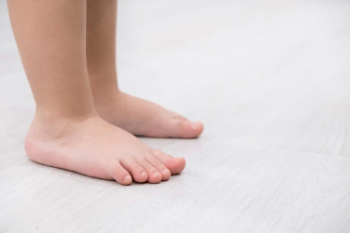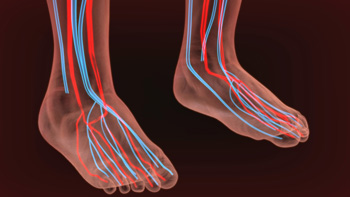Items filtered by date: April 2024
Foot and Ankle Stretches to Prevent Running Injuries

Preventing running injuries is important for runners of all levels, and incorporating preventive measures into your routine can make a significant difference. Start by investing in proper running shoes that offer adequate support, cushioning, and stability for your foot type and gait. Additionally, prioritize ankle mobility through exercises such as ankle circles, calf stretches, and heel lifts to maintain flexibility and range of motion. Strengthening exercises for the feet, toes, and ankles, such as toe scrunches, calf raises, and resistance band exercises, can help improve stability and reduce the risk of strains and sprains. Incorporating dynamic warm-up routines before running sessions and static stretches afterward can also promote muscle elasticity and prevent tightness. It is beneficial to listen to your body and avoid overtraining, gradually increasing mileage and intensity to allow for proper adaptation and recovery. If you have incurred a foot or ankle injury while running, it is suggested that you visit a podiatrist who can offer effective treatment solutions, and guide you on additional running prevention methods.
Exercising your feet regularly with the proper foot wear is a great way to prevent injuries. If you have any concerns about your feet, contact Dr. Douglas Mckay of New Jersey . Our doctor will treat your foot and ankle needs.
How to Prevent Running Injuries
Many common running injuries are caused by overuse and overtraining. When the back of the kneecap starts wearing out and starts causing pain in your knee, this is commonly referred to as runner’s knee. Runner’s knee is a decrease in strength in your quadriceps and can occur if you’re not wearing properly fitted or supporting shoes. To prevent runner’s knee, focusing on hip strengthening is a good idea, as well as strengthening your quads to keep the kneecaps aligned.
What Are Some Causes of Running Injuries?
- One cause of a common running injury is called iliotibial band syndrome.
- Plantar fasciitis is also another common injury.
- Stress fractures can occur from overtraining, lack of calcium, or even your running style.
Best Ways to Prevent Running Injuries
- Wear footwear that fits properly and suits your running needs.
- Running shoes are the only protective gear that runners have to safeguard them from injury.
- Make a training schedule. Adding strengthening exercises as well as regular stretching can help keep you strong and limber and can lessen the possibility of injuries.
- Stretching keeps muscles limber; this will help you gain better flexibility.
If you have any questions please feel free to contact one of our offices located in Caldwell, and Galloway, NJ . We offer the newest diagnostic and treatment technologies for all your foot and ankle needs.
Understanding Flat Feet in Children

Flat feet, also known as fallen arches, are a common condition where the arches of the feet touch the ground when standing. While it is normal for babies and toddlers to have flat feet due to underdeveloped arches, most children develop arches by the age of six. However, some children continue to have flat feet into adolescence and adulthood. In many cases, flat feet do not cause any problems or require treatment, although some children may experience foot pain, stiffness, or difficulty with activities like running or sports. It is important for parents to monitor their child's foot development and seek medical attention if they have concerns about flat feet. A podiatrist can assess the child's feet and recommend appropriate interventions, such as wearing supportive footwear or custom orthotic inserts. By understanding flat feet and seeking timely intervention when needed, parents can help ensure their child's foot health and overall well-being. If your child has maintained flat feet beyond the age of six, it is strongly suggested that you confer with a podiatrist who can monitor your child’s condition.
Flatfoot is a condition many people suffer from. If you have flat feet, contact Dr. Douglas Mckay from New Jersey . Our doctor will treat your foot and ankle needs.
What Are Flat Feet?
Flatfoot is a condition in which the arch of the foot is depressed and the sole of the foot is almost completely in contact with the ground. About 20-30% of the population generally has flat feet because their arches never formed during growth.
Conditions & Problems:
Having flat feet makes it difficult to run or walk because of the stress placed on the ankles.
Alignment – The general alignment of your legs can be disrupted, because the ankles move inward which can cause major discomfort.
Knees – If you have complications with your knees, flat feet can be a contributor to arthritis in that area.
Symptoms
- Pain around the heel or arch area
- Trouble standing on the tip toe
- Swelling around the inside of the ankle
- Flat look to one or both feet
- Having your shoes feel uneven when worn
Treatment
If you are experiencing pain and stress on the foot you may weaken the posterior tibial tendon, which runs around the inside of the ankle.
If you have any questions please feel free to contact one of our offices located in Caldwell, and Galloway, NJ . We offer the newest diagnostic and treatment technologies for all your foot and ankle needs.
The Impact of Obesity on Foot Health

Obesity casts a profound shadow over foot health, influencing various aspects of function and well-being. Excessive body weight places immense pressure on the feet, exacerbating biomechanical stress and strain. The increased load on weight-bearing structures, such as joints, ligaments, and tendons, can lead to structural changes, including flattening of the arches and misalignment of the foot bones. Consequently, individuals with obesity are more susceptible to foot ailments such as plantar fasciitis, osteoarthritis, and stress fractures. Moreover, the excess fat tissue surrounding the feet may impede circulation and impair healing processes, predisposing to conditions like peripheral artery disease and delayed wound healing. Mobility and balance may also be compromised, increasing the risk of falls and injuries. Addressing obesity through lifestyle modifications, including dietary changes and regular exercise, is essential not only for overall health but also for managing the adverse effects on foot health. If you are overweight and have developed foot pain, it is suggested that you contact a podiatrist who can help you with relief and management tips.
Obesity has become very problematic at this point in time and can have extremely negative effects on the feet. If you’re an obese individual and are concerned about your feet, contact Dr. Douglas Mckay from New Jersey . Our doctor can provide the care you need to keep you pain-free and on your feet.
Obesity and Your Feet
Since your feet are what support your entire weight when standing, any additional weight can result in pain and swelling. Being overweight is one of the main contributors to foot complications.
Problems & Complications
Extra Weight – Even putting on just a few extra pounds could create serious complications for your feet. As your weight increases, your balance and body will shift, creating new stresses on your feet. This uneven weight distribution can cause pain, even while doing the simplest tasks, such as walking.
Diabetes – People who are overweight are at serious risk of developing type-2 diabetes, which has a drastic impact on the health of your feet. As you get older, your diabetes might worsen, which could lead to loss of feeling in your feet, sores, and bruises. You could also become more prone to various infections.
Plantar fasciitis – Pressure and stress that is placed on muscles, joints, and tendons can trigger plantar fasciitis, which is an inflammation of tissue that forms along the bottom of the foot.
If you have any questions please feel free to contact one of our offices located in Caldwell, and Galloway, NJ . We offer the newest diagnostic and treatment technologies for all your foot and ankle needs.
Football Injuries Affecting the Ankle

The ankle, a complex joint connecting the foot to the leg, plays a vital role in mobility and stability during various sports and activities. Football, with its rapid direction changes, sudden stops, and high-impact collisions, places significant stress on the ankle joint, increasing the risk of injury. Football players are at high risk for a sprained ankle, resulting from stretching or tearing of the ligaments surrounding the joint. Symptoms of a sprained ankle include pain, swelling, bruising, and difficulty bearing weight on the affected foot. Additionally, fractures of the ankle bones, particularly the lateral malleolus, or fibula, can occur due to forceful impacts or twisting motions. Prompt medical evaluation and appropriate treatment are essential for managing ankle injuries effectively and preventing long-term complications. If you have suffered an ankle injury while playing football or other sports activities, it is suggested that you consult a podiatrist for a tailored treatment plan.
Ankle and foot injuries are common among athletes and in many sports. They can be caused by several problems and may be potentially serious. If you are feeling pain or think you were injured in a sporting event or when exercising, consult with Dr. Douglas Mckay from New Jersey . Our doctor will assess your condition and provide you with quality foot and ankle treatment.
Common Injuries
The most common injuries that occur in sporting activities include:
- Achilles Tendonitis
- Achilles Tendon Rupture
- Ankle Sprains
- Broken Foot
- Plantar Fasciitis
- Stress Fractures
- Turf Toe
Symptoms
Symptoms vary depending upon the injury and in some cases, there may be no symptoms at all. However, in most cases, some form of symptom is experienced. Pain, aching, burning, bruising, tenderness, tightness or stiffness, sensation loss, difficulty moving, and swelling are the most common symptoms.
Treatment
Just as symptoms vary depending upon the injury, so do treatment options. A common treatment method is known as the RICE method. This method involves rest, applying ice, compression and elevating the afflicted foot or ankle. If the injury appears to be more serious, surgery might be required, such as arthroscopic or reconstructive surgery. Lastly, rehabilitation or therapy might be needed to gain full functionality in the afflicted area. Any discomfort experienced by an athlete must be evaluated by a licensed, reputable medical professional.
If you have any questions, please feel free to contact one of our offices located in Caldwell, and Galloway, NJ . We offer the newest diagnostic and treatment technologies for all your foot care needs.
Vitamins May Support Foot Circulation

When it comes to foot health, circulation plays an important role. Poor circulation can lead to discomfort, swelling, and severe complications. However, there is a natural solution that often gets overlooked, which is vitamins. Incorporating essential vitamins into your diet can significantly improve foot circulation and overall vascular health. Vitamin E, known for its antioxidant properties, aids in widening blood vessels and promoting efficient blood flow to the extremities, including the feet. Similarly, vitamin C supports collagen production, strengthening blood vessel walls and enhancing circulation. Additionally, vitamin B3, or niacin, has vasodilating effects, meaning it helps widen blood vessels, thus improving blood flow. Additionally, omega-3 fatty acids, while not vitamins per se, are essential for cardiovascular health. Found in abundance in fish oil and certain seeds, omega-3s can reduce inflammation and enhance blood circulation throughout the body, including the feet. By incorporating these essential nutrients into your diet through whole foods or supplements, you can effectively improve foot circulation, ensuring optimal foot health and comfort for years to come. If you have poor foot circulation and are seeking relief techniques, it is suggested that you consult a podiatrist who can discuss how vitamins can play a role in treatment.
While poor circulation itself isn’t a condition; it is a symptom of another underlying health condition you may have. If you have any concerns with poor circulation in your feet contact Dr. Douglas Mckay of New Jersey . Our doctor will treat your foot and ankle needs.
Poor Circulation in the Feet
Peripheral artery disease (PAD) can potentially lead to poor circulation in the lower extremities. PAD is a condition that causes the blood vessels and arteries to narrow. In a linked condition called atherosclerosis, the arteries stiffen up due to a buildup of plaque in the arteries and blood vessels. These two conditions can cause a decrease in the amount of blood that flows to your extremities, therefore resulting in pain.
Symptoms
Some of the most common symptoms of poor circulation are:
- Numbness
- Tingling
- Throbbing or stinging pain in limbs
- Pain
- Muscle Cramps
Treatment for poor circulation often depends on the underlying condition that causes it. Methods for treatment may include insulin for diabetes, special exercise programs, surgery for varicose veins, or compression socks for swollen legs.
As always, see a podiatrist as he or she will assist in finding a regimen that suits you. A podiatrist can also prescribe you any needed medication.
If you have any questions, please feel free to contact one of our offices located in Caldwell, and Galloway, NJ . We offer the newest diagnostic and treatment technologies for all your foot care needs.

